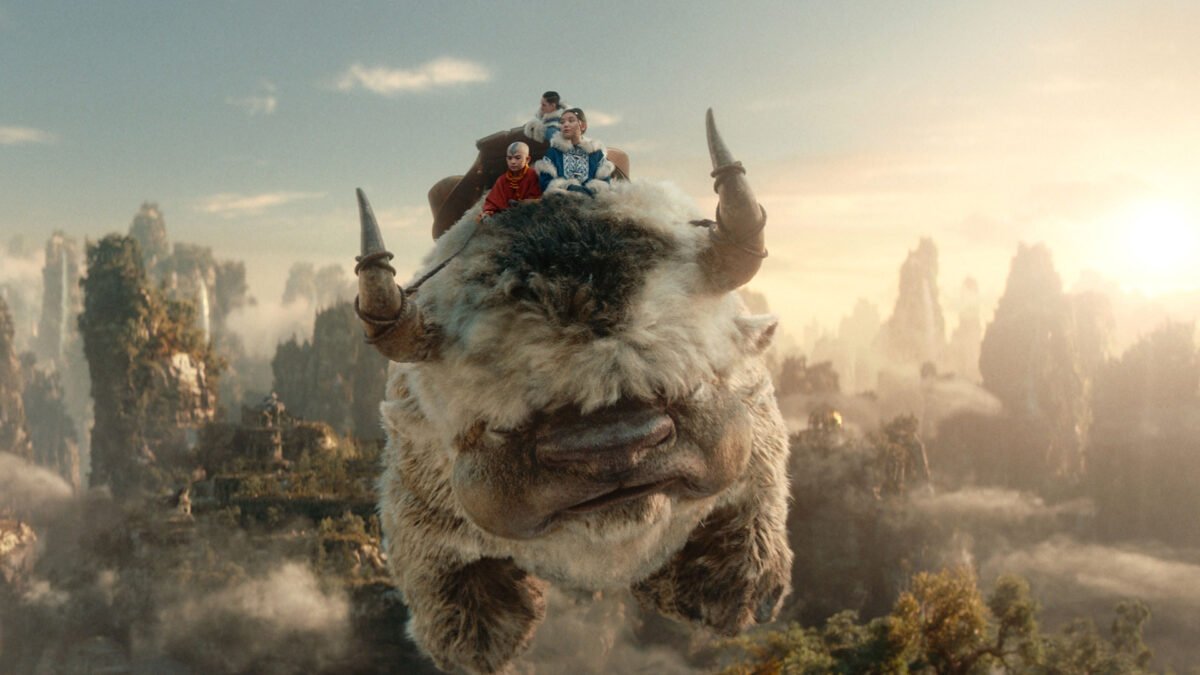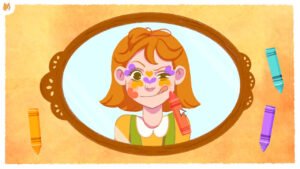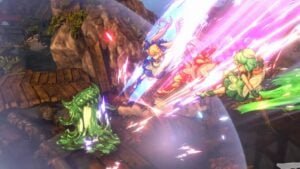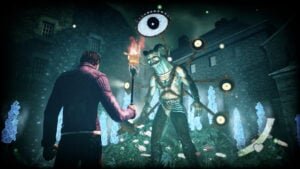In the highly anticipated live-action adaptation of the beloved animated series Avatar: The Last Airbender, Netflix has brought the mystical world of benders to life through groundbreaking visual effects. Already renewed for two more seasons, the show works to capture the magic of the animation in a whole new way. At the helm of this ambitious undertaking are VFX supervisors Jabbar Raisani and Marion Spates, whose expertise has been instrumental in translating the iconic elemental powers into a visually stunning reality.
Raisani, a veteran of productions like Stranger Things, Lost in Space and Game of Thrones, and Spates, who worked on WandaVision and Independence Day: Resurgence, have faced the daunting challenge of adapting the animated series into live-action. Their meticulous attention to detail and innovative techniques have breathed life into the intricate bending arts, transporting viewers to a vast and immersive world where air, water, earth, and fire bend to the will of the characters. We were lucky enough to sit down with both VFX experts just as Avatar: The Last Airbender was hitting the streaming giant to dive into what it took to bring this world to life in a whole new way.

The world of Avatar: The Last Airbender is vast and expansive, filled with diverse imagery and concepts. How did you begin translating that from the original concept and animation into a live-action format?
Jabbar Raisani: I think we started with the animation. We really tried to create a mood board or collage for each environment we were creating, for each creature we were creating, and for the bending itself. From there, working with production designer Mike Wiley for the visuals on the show, coming up with our palette for Omashu, for example, or any individual city — what the palette looks like for costumes or props. He and his team did a great job setting the stage for the world. And then, when it came to visual effects, it was really picking up from there, but continuing it.
Marion Spates: Once we have all that imagery from the art department, we then go in and start looking at real-world imagery. Also, for characters, we look at real-world examples for all our characters and try to associate which character is which. Like the badger mole, he’s such a big creature. We referenced a lot of the bear, also a mole, but the bear, as far as his size and weight. Then, with bending, we would associate all the bending with real-world scenarios. For instance, with fire bending, we would use a flamethrower to get that detail and all that distortion it has—heat distortion— and look at how much smoke it has.
And then we would also add sparks and things like that. Our main goal was to do the anime but also have it feel grounded, as if all of this could really happen in today’s world. And that’s something Javar and I have done ever since we started working together in 2016 on Lost in Space—try to make everything feel as photographic as possible as if it really could happen in today’s world.

Our writer, Ridge, who reviewed Avatar: The Last Airbender, was really excited by how you blended the real locations with the CGI and made it feel seamless. How did you go about figuring out what needed to be CGI and what needed to be actual location shooting and animatronics? And how did you blend those together so it worked?
Jabbar Raisani: Up front, with being on set and directing it, it’s about what makes the right choice based on the scene that we’re shooting, what makes the right choice based on the environment that we’re in. Omashu was particularly difficult because it wasn’t something that was available to us in Vancouver. There wasn’t a place where that could pass for an on-land type landscape. So then we utilized the green screen, we utilized the volume, and we did a little bit of practical shooting as well as some sets that we built.
It was really about trying to find the right solution for the scene that we were filming. And then when we got into post, it was a lot of, “Hey, did that work? Do we need to augment things that we shot on the volume? Do we need to go into DI and colour and tune stuff to marry the set to the extension digitally? Do we need to replace something?” There are instances where it’s like, “Hey, we thought that was going to work, but in order to make it look real and really get the audience engaged in the story, we have to go into visual effects and really augment or replace something that’s there so you do stay in the story and don’t think about the visual effects.”
Just touching on the characters and the creatures of Avatar: The Last Airbender, how closely did you try to make sure it stayed true to what was originally in the animated series?

Marion Spates: Most importantly, we would try to match the silhouettes from the anime. A lot of the detail in the anime is not quite there, so if we can get the silhouettes right, then from there, we can start adding in all the detail that you don’t really see in the animated series because we want the creature to feel grounded.
Jabbar Raisani: I think Hei Bai is a good example, where Hei Bai is really just black and white. And then you have to answer the question of, “OK, but what does the skin detail actually look like?” Those are the kinds of answers that you have to ask the vendors on the visual effects side: Is the skin this texture? Is it leathery? Is it silky? Is it furry? Those are all things that we’re trying to answer without being able to lean on the animated series. That’s where we’re looking at the real world.
For example, for Nyla, we’re looking at wolves and trying to pull from creatures that do exist, but maybe not at that scale. For a star-nosed mole, for Nyla’s nose, we’re always trying to find those things in reality that we can put together to make something that feels very real, but also feels very familiar to the animated series. In terms of things that didn’t work, we eventually hammered hard enough to find what worked, and we didn’t want to deviate from the animated series.
So it was more of the challenge—what do we do to make it feel like the animated series without reinventing it? And sometimes, it was a struggle, and we just kept hammering on the problem until, “Oh, there it is.” Appa and Momo are a good example of that. If you look at the animated series, Appa and Momo are drawn differently depending on what frame you’re on and what season you’re in.

So you have to take this compilation of a bunch of different images of Appa and Momo and figure out which ones you want to reference, then take a subset of images from the whole show and say, “Okay, this is what Appa should look like.” And then you have to dimensionalize that into 3D in a way that you can’t change shot by shot. Appa is one size, one scale in our show. In the animated series, sometimes Appa is this big, and sometimes Appa is that big.
There is variation in scale. And we really didn’t want to do that. That would be a challenge where we did have to deviate because we are trying to ground it in reality. We want one physical asset. Appa’s size was one of those places where we did deviate, but I think for good reason.
Avatar: The Last Airbender is a series that generations have grown up with and love. Was it daunting to tackle this project knowing that there are so many eyes wanting to see it done just right?
Jabbar Raisani: We don’t take the task lightly. You know, we both worked on Stranger Things. We came on later in the show on season 4. And it’s a similar environment where you’re coming into a situation where you know fans have certain expectations. You know, in that case, the Duffer brothers had very large expectations for what the visuals needed to bring to the story.
And we don’t take those things lightly, but at this point, you know, we’ve been lucky enough to do it on multiple occasions to where I wouldn’t say it is daunting in a way that feels like it’s not surmountable. It’s just something that we have a lot of respect for, the fan base and their desire to have the version of the show that they want, and we want to meet them where they want to be met. We also want that from our work. We want it to be the version that they want to see. And like, we’re really proud to take it to that level.

Were either or both of you fans of the series, comics, etc., before you tackled this project?
Jabbar Raisani: I was a huge fan of the animated series. I found out that Netflix had the rights to it and was going to be making a live-action adaptation. Ted Biaselli, who was our creative exec on Lost in Space at the time, was the creative exec on this. And I was like, “Look, Teddy, I have to work on this show.” He said, “You still have another season of Lost in Space to do.”
Marion was actually doing a presentation on Lost in Space when we saw Teddy and talked to him about it. And he’s like, “You have another season.” I was like, “Okay, I get it, but the show is huge. It’s going to take forever to get going. So it could time out.” And fortunately, it did. I really only try to work on things that I’m a huge fan of. I was lucky enough to be a huge fan of Game of Thrones and managed to get onto that show. Lost in Space was similar, and then Stranger Things was sort of the same deal. Just kind of following my passion for the property makes it easy to know which shows I need to move towards working on.
Marion Spates: Yeah, as far as me, I’d have to say I found the love of the show through this show.
That’s totally fair.
Marion Spates: As a kid, I didn’t watch a lot of cartoons. I just had this whole issue with things being two-dimensional. And once I got into a three-dimensional world, like being in CG, my eyes adapted better. But learning about the show has been a challenge as you’re doing it. Again, I’m watching season one of the anime right now, just so I can get more familiar with everything as I continue to watch the cartoon and the other seasons. But I’m fortunate to be on it. I just love doing hard stuff, to be honest. So when Jabbar said we’re doing this, I said, “Yeah, let’s do it.” But I’m very excited for the show, very proud to be on it. And I want the fans to be happy, or I feel like we didn’t succeed.

To quickly wrap up, what are things people should look for when watching the Avatar: The Last Airbender Netflix series?
Jabbar Raisani: Oh, you want some little Easter eggs?
Of course, that is the fun part!
Jabbar Raisani: Keep your eye out for chicken blossoms, which I don’t know if anybody spotted at the premiere. We put a few in there. It’s a very obscure creature that’s talked about a few times. There’s only one image of it in the original animated series, so there’s not a lot of visual reference to pull from, but we put that in there. What else are some fun things in there?
Oh, in the first scene with Katara and Sokka on the water, just keep your eye out for some additional creature work that is not hero-featured, but you might recognize from the animated series. We really did try to, aside from on a very obvious level, reference the animated series and make the show look and feel like the animated series. We tried to find little ways to sneak things in that weren’t as obvious.
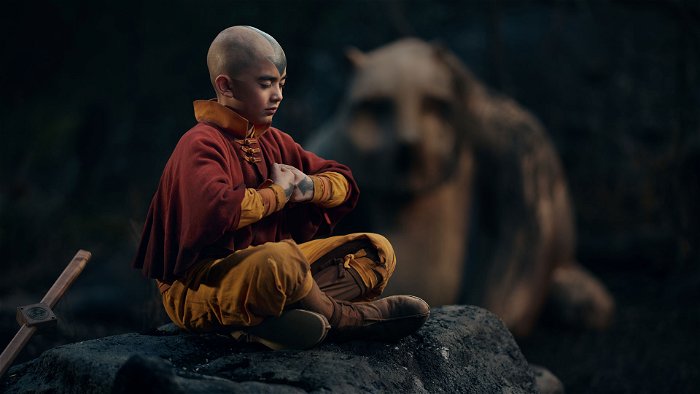
People did catch one in the original teaser that came out. We put the cabbage cart, like, it was so tiny in the shot, and someone caught it. And I was like, “Man, that is crazy how rabid fans are about finding every little detail,” and they found one. So they’re in there. I’m sure people will continue to find them as they pour over the show. But we’re just excited for it to finally be in the world. We’ve been working on it for a long time. I’ve had three birthdays on this show. It’s finally out there, and other people can experience what we’ve put years of our lives into.
Awesome. Thank you so much. It was a pleasure talking to you both.
Jabbar Raisani: Bye. Thank you. Take care.
